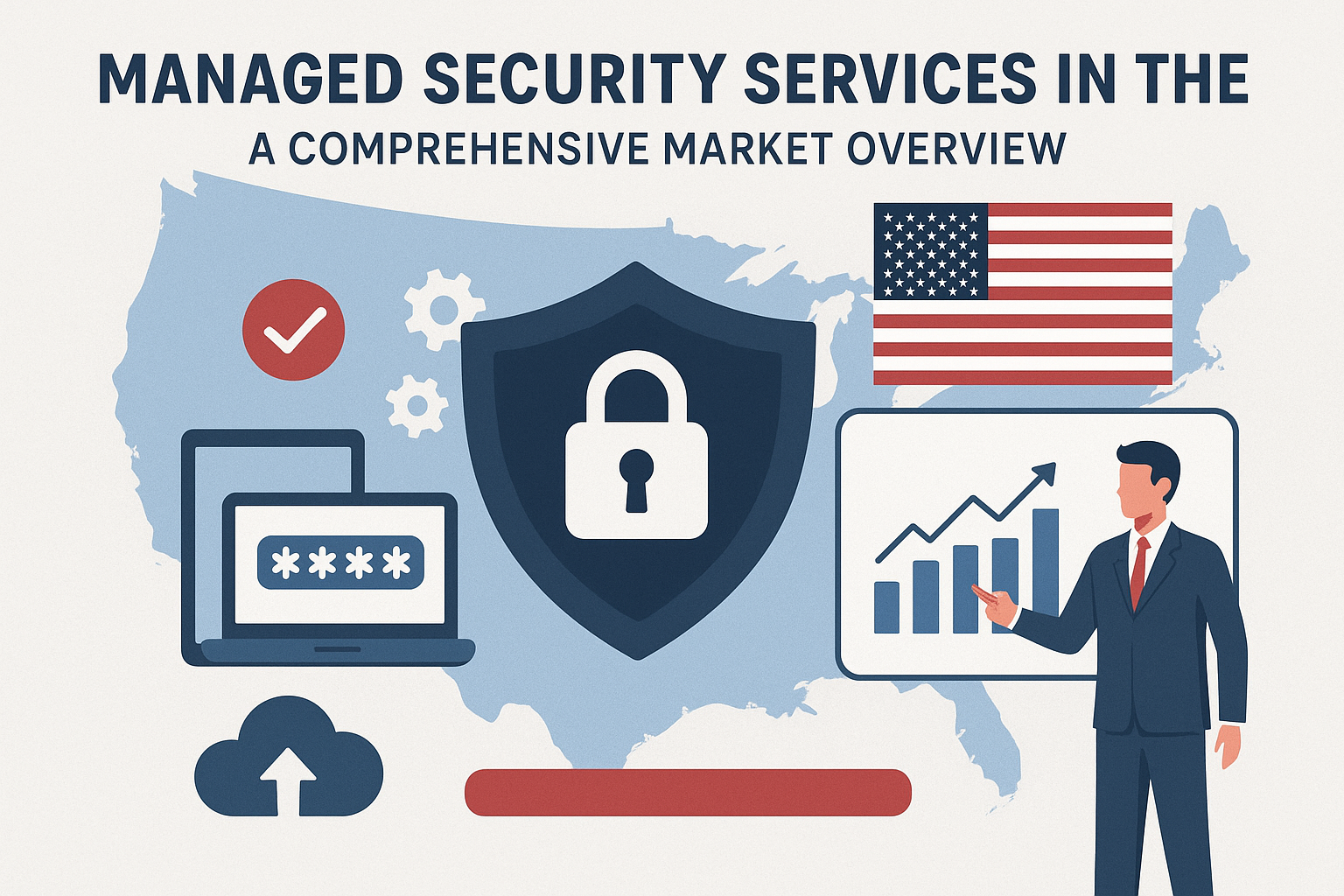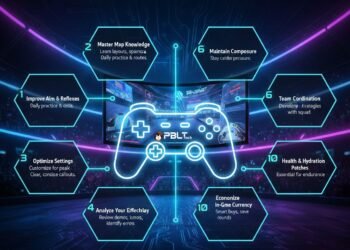Executive Summary
The cybersecurity landscape in the United States is undergoing a radical transformation. Fueled by an increasingly sophisticated threat actor ecosystem, a pervasive cybersecurity skills gap, and complex regulatory pressures, American organizations are pivoting from building internal security fortresses to leveraging specialized external partners. This shift is catalyzing unprecedented growth and evolution in the Managed Security Services (MSS) market. This report, structured as a definitive managed security services us trends pdf guide, delves into the core trends defining this new era. We move beyond mere monitoring to explore the rise of full-scale Managed Detection and Response (MDR), the strategic imperative of cloud security, the game-changing impact of Artificial Intelligence (AI), and the critical frameworks of Zero Trust. Understanding these trends is no longer a strategic advantage but a operational necessity for resilience in the modern digital economy.
Introduction: The Impetus for Change
For decades, the traditional Managed Security Services Provider (MSSP) model was defined by a “set-and-forget” approach, primarily centered around the management of Security Information and Event Management (SIEM) systems and firewall appliances. The MSSP’s role was to monitor, alert, and maintain. However, the velocity, volume, and sophistication of cyberattacks have rendered this passive model insufficient.
Several convergent factors are driving the US market towards more proactive, intelligence-driven, and outcome-oriented security services:
The Talent Chasm: The (ISC)² Cybersecurity Workforce Study consistently highlights a gap of hundreds of thousands of cybersecurity professionals in the US. Organizations, especially mid-market enterprises, simply cannot compete with the salaries and allure of tech giants to staff a 24/7 Security Operations Center (SOC).
Sophisticated Threat Actors: The attack landscape has evolved from lone hackers to well-funded nation-states and organized cybercrime syndicates utilizing advanced techniques, making defense a highly specialized field.
Regulatory and Compliance Complexity: With regulations like GDPR, CCPA, and sector-specific rules like HIPAA and NYDFS, compliance is a massive undertaking. MSSPs provide the expertise and tools to navigate this maze.
Digital Acceleration and Cloud Sprawl: The rapid shift to cloud and hybrid work models has exploded the corporate attack surface, demanding security expertise that many internal IT teams lack.
This report synthesizes the latest market data, expert analysis, and case studies to present a clear picture of the current state and future direction of Managed Security Services in the United States.
Section 1: The Ascendancy of Managed Detection and Response (MDR)
The most significant trend is the market’s decisive shift from traditional MSS to Managed Detection and Response (MDR). While MSS is about monitoring, MDR is about hunting and neutralizing.
What is MDR?
MDR is a service that combines advanced technology (like EDR/XDR platforms) with human expertise to not only detect threats but also to actively investigate and respond to them in real-time. MDR providers hunt for threats that evade traditional signature-based defenses and contain them before they can cause significant damage.
Key Characteristics of Modern MDR:
Endpoint-Centric Focus: MDR heavily relies on Endpoint Detection and Response (EDR) tools that provide deep visibility into what is happening on every device (laptops, servers, etc.) across the network.
24/7 Threat Hunting: Instead of waiting for alerts, MDR analysts proactively search for indicators of compromise (IOCs) and anomalous behavior within a customer’s environment.
Guaranteed Response Times: Service Level Agreements (SLAs) for MDR are built around response and containment times, not just alert generation.
Integrated Remediation: The MDR provider doesn’t just tell you about a problem; they take guided steps to isolate infected endpoints, kill malicious processes, and eradicate the threat.
US Market Driver: The rise of ransomware-as-a-service has made devastating attacks a matter of “when,” not “if.” US businesses, facing existential risk from downtime and data theft, are demanding a service that offers a fighting chance at stopping an attack in its early stages, making MDR the new baseline for managed security.
Section 2: The Cloud Security Conundrum and the MSSP Solution
The mass migration of US business infrastructure to public clouds (AWS, Azure, GCP) has created a new frontier for security. The shared responsibility model is often misunderstood, leading to critical misconfigurations and exposed data.
The Rise of Cloud Security Posture Management (CSPM) and MDR for Cloud:
Leading MSSPs are no longer just securing on-premise networks; they are integrating Cloud Security Posture Management (CSPM) and extended detection and response (XDR) into their service portfolios.
CSPM Services: MSSPs use automated tools to continuously scan cloud environments for misconfigurations, such as unsecured S3 buckets, overly permissive IAM roles, or non-compliant network settings. They provide remediation guidance and often automate fixes.
XDR for Cloud Workloads: XDR platforms extend EDR principles to cloud workloads, servers, and containers. MSSPs leverage XDR to detect cross-platform attacks that may start in an email, move to an endpoint, and then exfiltrate data from a cloud database.
Identity as the New Perimeter: With cloud access, identity is the primary control plane. Advanced MSSPs now monitor for anomalous sign-in attempts, impossible travel scenarios, and privilege escalation within cloud identity providers like Azure AD.
US Market Driver: High-profile data breaches stemming from cloud misconfigurations have placed immense pressure on US companies to secure their cloud estates. Internal IT teams often lack the specialized skills, making a managed security services us trends pdf analysis essential for identifying providers with proven cloud security competencies.
Section 3: The AI and Automation Revolution
Artificial Intelligence (AI) and Machine Learning (ML) are not just buzzwords; they are fundamental technologies enabling MSSPs to scale their services and enhance their efficacy.
Applications in Modern MSS:
Alert Triage and Reduction: AI-powered algorithms analyze millions of low-level events and alerts daily, correlating them and filtering out the noise. This surfaces only the high-fidelity, genuinely suspicious incidents for human analysts to investigate, dramatically improving SOC efficiency.
Behavioral Analytics: ML models establish a baseline of “normal” behavior for users, endpoints, and networks. They can then flag significant deviations from this baseline—such as a user accessing files they never usually do at 3 AM—which may indicate a compromised account.
Predictive Threat Intelligence: AI systems analyze global threat feeds, dark web forums, and malware repositories to identify emerging attack patterns and campaigns. This allows MSSPs to proactively update defenses for their entire client base before a new threat strikes a specific customer.
Automated Response (SOAR): Security Orchestration, Automation, and Response (SOAR) platforms allow MSSPs to create playbooks that automate common response actions. For example, if a malware signature is confirmed, the SOAR platform can automatically isolate the host from the network without waiting for human intervention, containing the threat in seconds.
US Market Driver: The sheer volume of security data is unmanageable by humans alone. US-based MSSPs are competing on the sophistication of their AI-driven platforms, using it as a key differentiator to promise faster, more accurate threat detection and reduced operational overhead for their clients.
Section 4: The Zero Trust Architecture Mandate
The Zero Trust model, succinctly captured by the motto “Never Trust, Always Verify,” has moved from a conceptual framework to a strategic imperative, largely driven by US federal directives (Executive Order 14028) and its adoption by leading enterprises.
How MSSPs are Implementing Zero Trust:
MSSPs are uniquely positioned to help organizations implement the complex, ongoing process of Zero Trust, which is not a product but a security architecture.
Identity and Access Management (IAM): MSSPs help deploy and manage multi-factor authentication (MFA), single sign-on (SSO), and identity governance solutions to enforce strict access controls.
Micro-Segmentation: This involves dividing the network into tiny, secure zones to prevent lateral movement by attackers. MSSPs assist in designing and enforcing these policies across both on-premise and cloud networks.
Continuous Verification: Zero Trust is not a one-time authentication. MSSPs use their monitoring platforms to continuously assess the risk posture of every device and user session, requiring re-authentication if risk levels change (e.g., a device is found to be non-compliant).
Endpoint Compliance Validation: Before granting access to any resource, the MSSP’s system can verify that the requesting device is patched, has antivirus running, and is in a secure state.
US Market Driver: The shift to remote and hybrid work has obliterated the traditional network perimeter. US organizations are seeking partners who can help them implement a “verify explicitly, grant least privilege” access model, and MSSPs are filling this critical gap.
Conclusion: The Strategic Partner for a Resilient Future
The US Managed Security Services market is maturing from a commodity-based alerting service to a strategic partnership focused on proactive risk reduction and business enablement. The trends of MDR, cloud security integration, AI-driven operations, and Zero Trust implementation are not isolated; they are converging to create a new class of cybersecurity service.
For US business leaders, the choice is no longer if to engage an MSSP, but which one. The selected provider must demonstrate proven capabilities in these key trend areas, offering not just technology, but the expert human analysis and rapid response that define modern cyber resilience. The insights contained in this managed security services us trends pdf report provide a foundational framework for evaluating potential partners and making an informed decision that aligns with both security objectives and business goals. In the face of relentless cyber threats, a advanced MSSP is no longer a luxury; it is a cornerstone of a modern corporate defense strategy.
Frequently Asked Questions (FAQ)
Q1: What is the primary difference between a traditional MSSP and a modern MDR provider?
A traditional MSSP focuses on perimeter monitoring and managing security appliances (firewalls, SIEMs), generating alerts for your team to handle. A modern MDR provider is more hands-on; they use EDR/XDR technology and human experts to proactively hunt for threats and actively respond to and neutralize them on your behalf.
Q2: Why is Cloud Security Posture Management (CSPM) so critical for US businesses today?
The speed and complexity of cloud deployments often lead to misconfigurations that leave sensitive data exposed to the public internet. CSPM provides continuous, automated monitoring and remediation of these misconfigurations, addressing one of the most common causes of modern data breaches.
Q3: How does AI actually improve managed security services?
AI and Machine Learning dramatically reduce alert fatigue by filtering out false positives and correlating events to identify genuine threats. This allows human security analysts to focus their expertise on the most critical incidents, leading to faster and more accurate detection and response.
Q4: My company is mostly on-premise. Is Zero Trust still relevant?
Absolutely. Zero Trust is a philosophy that applies to any IT environment. It mandates verifying every access request, regardless of its source (inside or outside the network). This is crucial for defending against insider threats and attackers who have already breached the perimeter.
Q5: Where can I find a comprehensive analysis like this in a downloadable format?
This document is designed to function as a standalone analysis. For ongoing updates, we recommend searching for the latest managed security services us trends pdf reports from major industry analysts like Gartner, Forrester, and IDC, who frequently publish in-depth studies on this dynamic market. The trends outlined in this managed security services us trends pdf style report provide a solid foundation for 2024-2025 strategic planning.







